Pontremoli in Tuscany is one of the main towns of Lunigiana, a territory located at the bottom of Tosco Emiliano Apennines. This green and wild corner of northern Tuscany has a strategic position at the border with Liguria and Emilia Romagna. Pontremoli and Lunigiana, still off the tourist itineraries, are definitely interesting places to discover that will surprise you.
Pontremoli astonishes its visitors with a mix of nature, history, and culinary traditions distinct from the rest of the region. Even the dialect and the accent are different, much closer to Emilian and Ligurian accents than to the true Tuscan.
A Step Back into the History of Pontremoli
The Roman Era
According to Latin, the name Pontremoli derives from the words Pons Tremulus. Pons refers to the ancient bridge that crossed the stream Verde, so-called because of the green color of its water. Tremulus may refer both to an old name of the poplar wood used to build the bridge and to the fact that the bridge was a little trembling.
Because of its strategic position on the Cisa mountain pass, the Romans, under Emperor Frederick II, considered Pontremoli as the Key and the Gate of the Apennines.
Pontremoli during the Middle Ages
Pontremoli was one of the eighty stages of the Via Francigena, the ancient medieval route connecting Canterbury in the Uk to Rome. Sigeric the Serious, Archbishop of Canterbury, walked the route in the year 990 as a penitential pilgrimage to ask forgiveness for his sins. He traversed all these kilometers also to receive the pallium from the Pope.
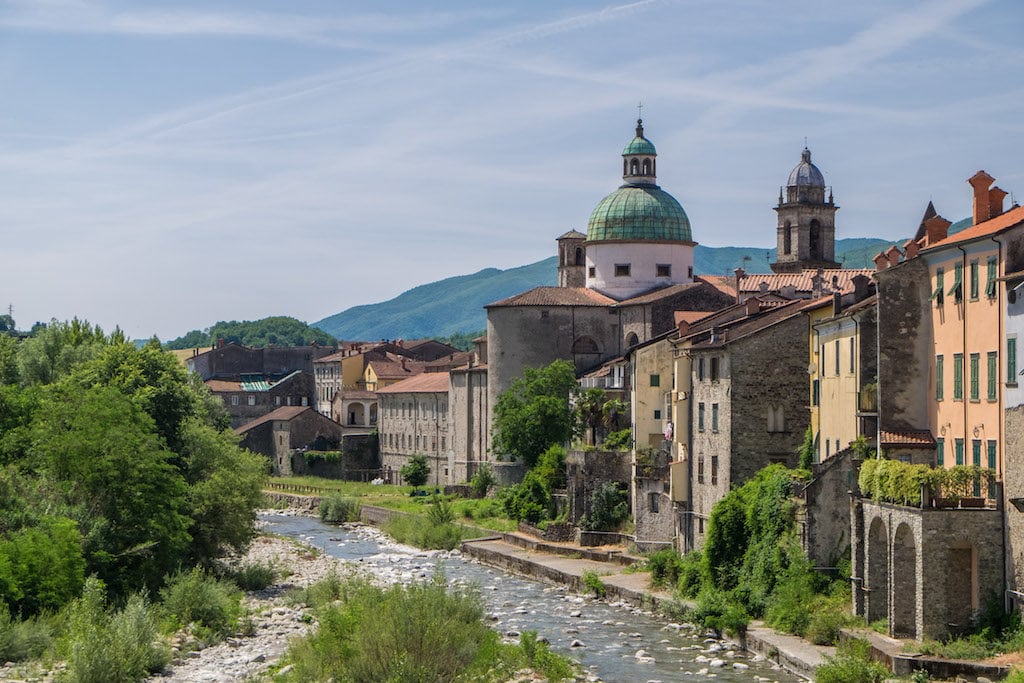
Strolling around you could see Middle Ages pieces of evidence everywhere: from the many severe Case Torri (tower houses) built with Pietra Arenaria (sandstone) to bridges, and fortifications.
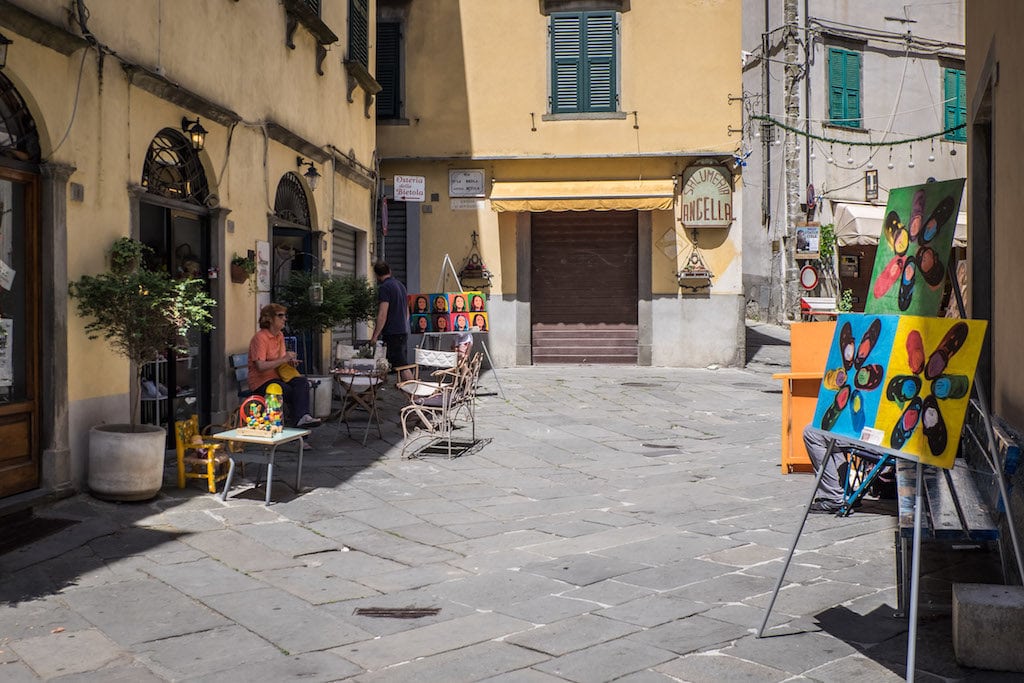
Renaissance and Modern Era
During the Modern Era, the government of Pontremoli changed families many times. It went from the Lords of Verona to the Visconti family of Milan. From the Reign of Spain under Emperor Charles V to the Republic of Genoa. From the Medici of Florence to the Dukedom of Parma just before the Unification of Italy in 1870.
Moreover, Pontremoli had significant economic development especially during the 17th and 18th centuries, as proven by the beautiful mansions designed by popular architects and artists. Today, you can take a guided tour of the Baroque Pontremoli with the agency Sigeric.
The Itinerant Booksellers of Lunigiana
The town of Pontremoli and its neighboring villages also have a fascinating and unique tradition that deserves a mention. Generations of itinerant booksellers departed from this area to sell books in the squares of northern Italy and the countryside. Many of the libraries that you still find in those places were opened by Pontremolesi families that left the mountains of Lunigiana looking for fortune elsewhere. Nowadays, every summer, an Italian book festival called Premio Bancarella takes place in town. A jury of booksellers comes from all over Italy to reward the bestseller books of the year.
Things to do in Pontremoli, Tuscany
Instead of a bulleted list of things to do in Pontremoli, we encourage you to explore it by proposing a walking tour that touches on the most important places in town.
The Old Pontremoli lies between the confluence of two watercourses: the stream Verde and the river Magra. In the past, they were the natural defenses of the town. From the top of the hill of Piagnaro, the medieval castle, today converted into a museum, still dominates the burg.
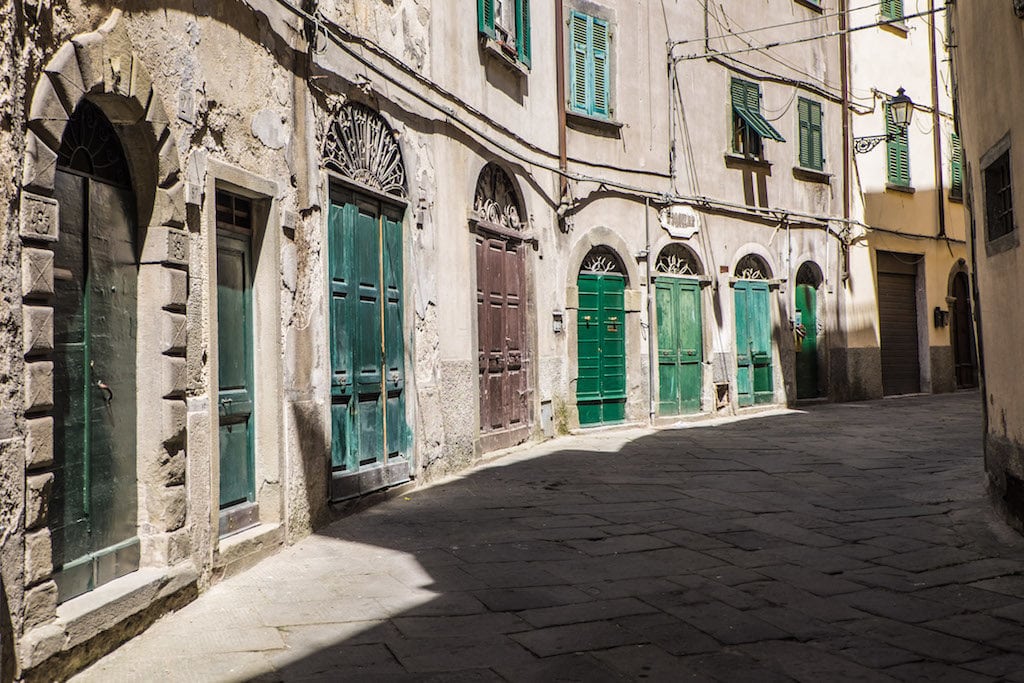
Porta Parma and the Sommo Borgo
One of the starting points of your tour of Pontremoli is the northern gate called Porta Parma. With your back to the door, looking north you will be faced with the mountain range of the Apennines. Upon the arch, a marble inscription informs us that this gate dates back to the 17th century. An incision with the name of Philip II King of Spain also reminds us of the Spanish domination.
Passing through the gate, the main Via Garibaldi departs. It crosses the highest borough called Sommo Borgo up to the Piazza del Duomo. In the Sommo Borgo, there are the two oldest churches of the Pontremoli: the church of San Geminiano and San Nicolò. Inside this latter, you can admire a precious black crucifix dated 15th – 16th century.

The Castle of Piagnaro and the Museum of Statue Stele
Walking along the street, on your right, you will notice a few steep lanes. They lead to the Castle of Piagnaro on top of the hill that dominates the valley. Recently, the old fortification has been converted into the interesting Museum of Statue Stele. It houses fascinating prehistoric and proto-historic stone artworks. These unique stones represent stylized human figures: male figures holding pointed knives while females have earrings and generous breasts. They dated back to the III millennium B.C. and the VI century B.C. This is one of the best things to do in Pontremoli Tuscany; you cannot miss it.
Another reason to climb up to the hilltop is the nice view of the entire historical center embraced by the two watercourses.
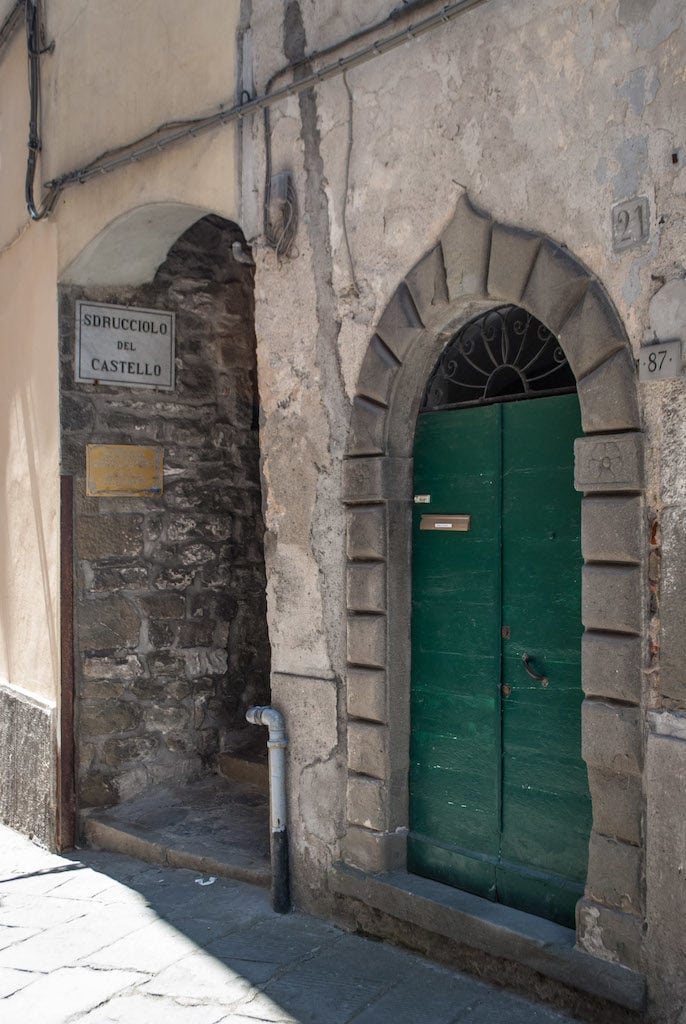
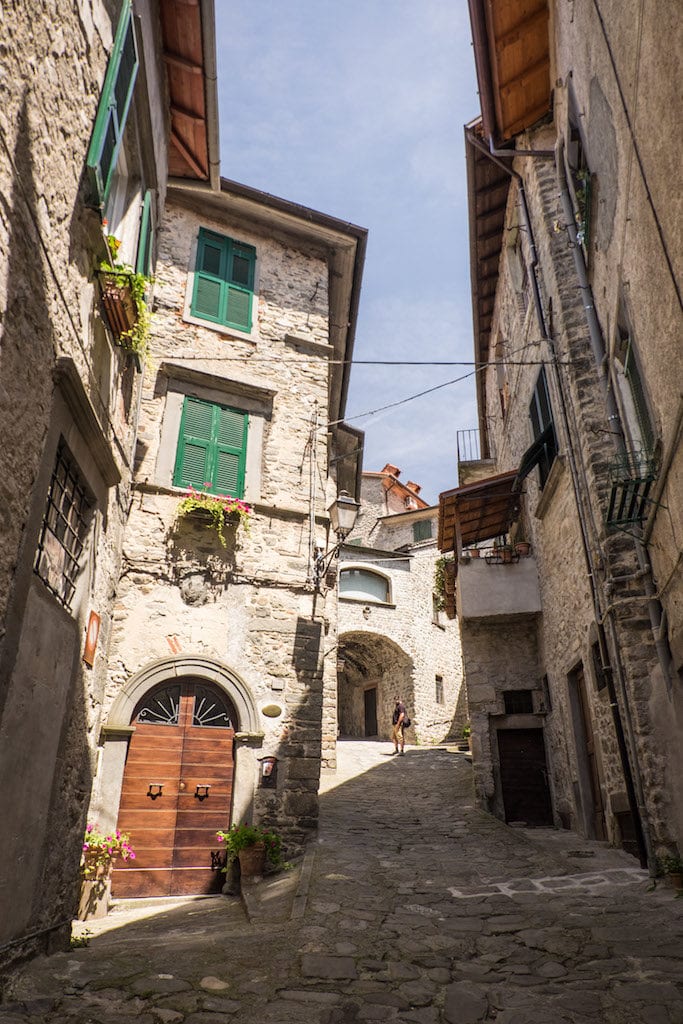
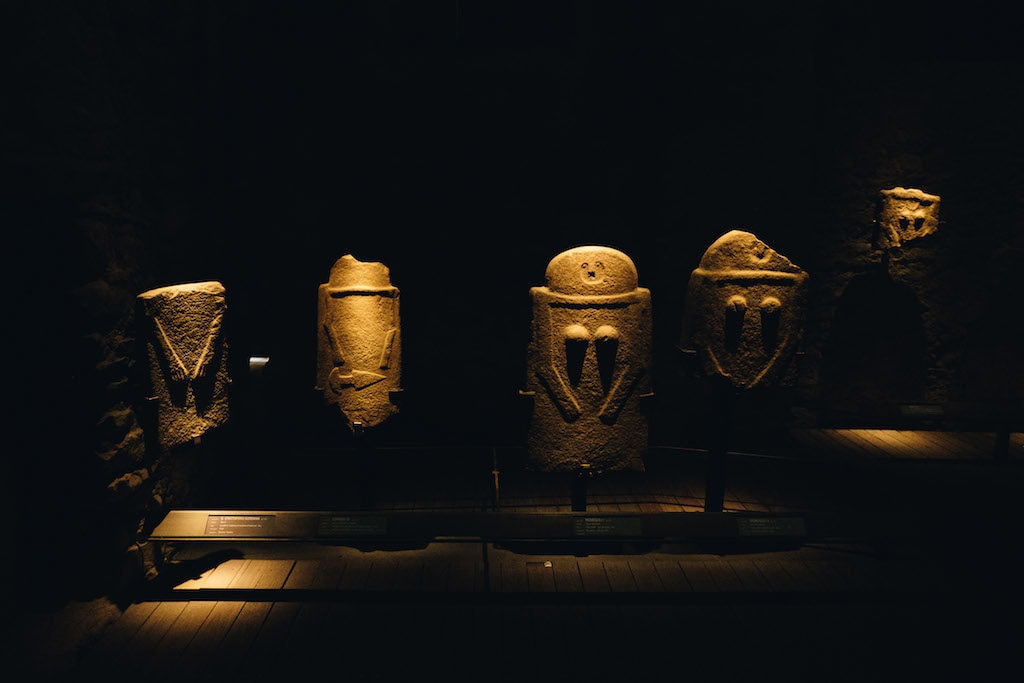
Porta Della Cresa and the Bridge of San Francesco di Sopra
On the way down from the hill to the center, reach the old gate of Della Cresa and the bridge of San Francesco di Sopra. The bridge of the Romanesque Era has an ancient origin. In the past, it connected the old Pontremoli with the nearby villages. Even if it has been restored several times due to river floods, it maintains the same structure and charm as the original construction of the 14th century.
Close to the bridge, there are two spacious car parks. So, this is another good point where to start the visit. From here, you can easily walk downtown following a tiny alley that passes under some old arches.
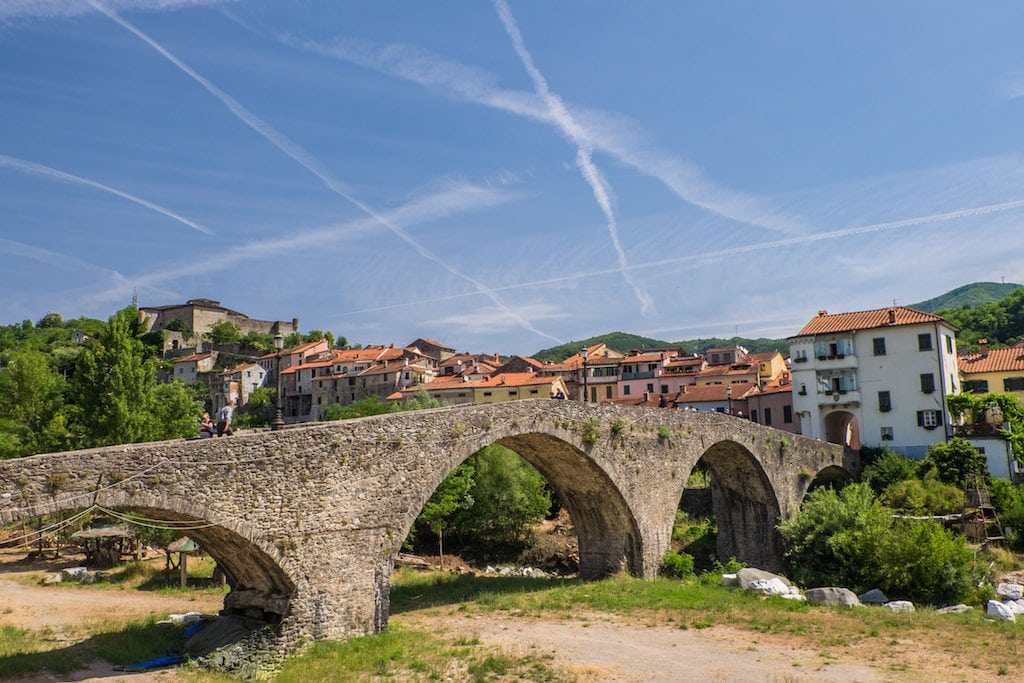
The Duomo and the Bell Tower
Downtown, take a look inside the Cathedral in the central Piazza del Duomo. The church hosts some precious artworks. Moving to the close Piazza della Repubblica you have a better view of the bell tower at all its height. The Campanone, which they call the bell tower, represented administrative power and was part of a defensive wall called Cacciaguerra.
Castruccio Castracani degli Antelminelli in 1332, decided to build the walls, running from the bank of the stream Verde to the river Magra. They split the town into two parts. The Guelphs commanded the upper part, while the Ghibellines controlled the lower.

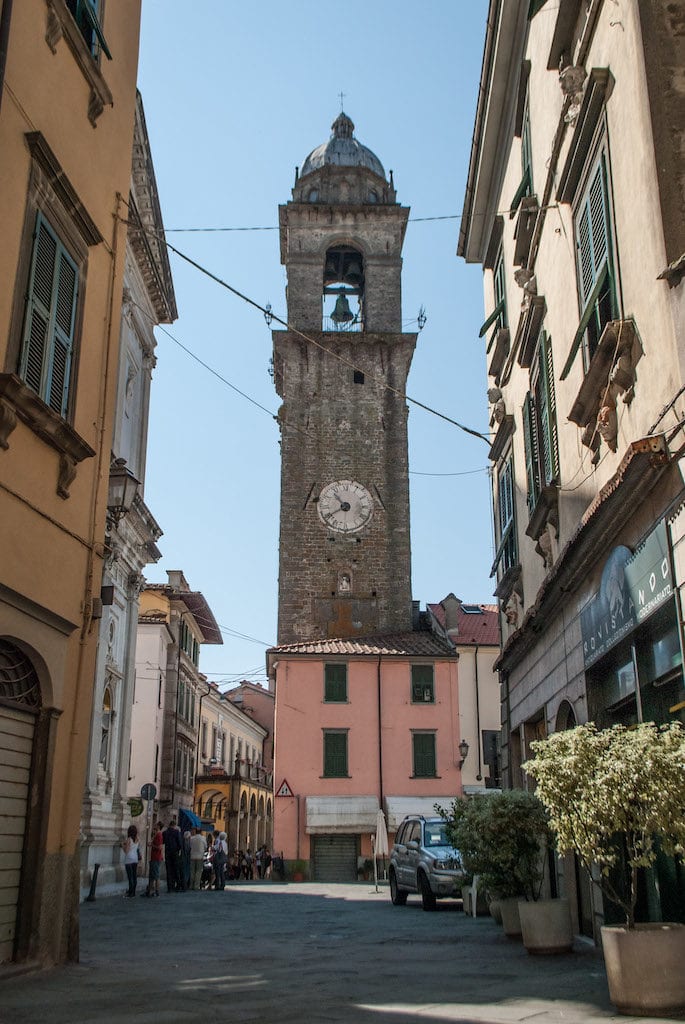
The Immo Borgo and the Park of the Tower
Keep walking along the central Via Garibaldi you reach the lower part of the medieval Pontremoli, also known as Immoborgo.
There are two scenic things to see in this lower suburb. The Torre del Casotto, a tower that dates back to the 14th century, and the old Ponte dello Stemma, literally the bridge of the coat of arms, were built between the 13th and 14th centuries.
Underneath the bridge, you find a quiet public park that is the perfect place to rest in the shade of trees, especially during the hot summer season.
From the park, take the walk called Passeggiata Verde along the stream to go back to the starting point of Porta Della Cresa. Otherwise, walk back to the main street, take the Jubilee bridge on your right, and explore the left bank of the Magra River.
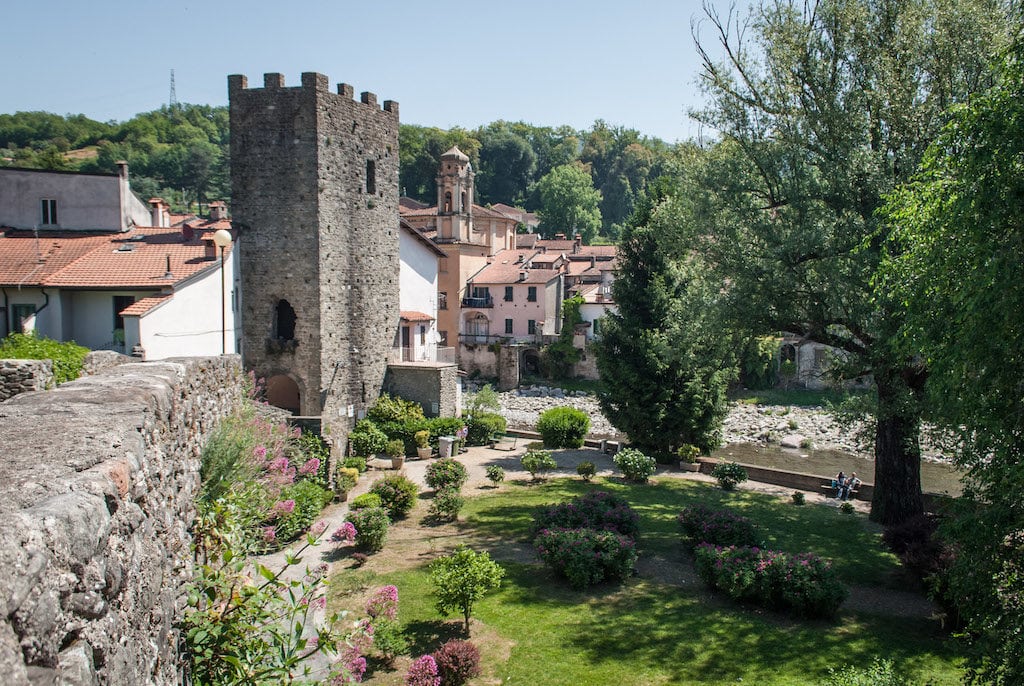
The left bank of the Magra River
On the left side of the river Magra is plenty of charming places, evidence of its medieval splendor:
- The Castelnuovo tower was part of the defensive system and a gate to enter the town.
- If you love Baroque architecture save some time to visit the small church of Nostra Donna, Our Lady. It was built on the ruins of the Oratory of the Madonna del Ponte, destroyed by a fatal flood.
- Nearby, you also find Teatro Della Rosa, the Theatre of the Rose. It dated back to 1739 and seems that is the oldest of the province. A tour of the theatre is available on request.
- Have a look inside the church of Santa Cristina to admire its paintings and reach the mansions of the Petrucci and Damiani Families, both decorated with astonishing frescoes.
- At the far end of the hamlet, there is the garden of Porta Fiorentina, Florentine’s Gate. Walls and fortifications that once surrounded the gardens are still visible.
- Finally, look for the church of San Pietro which houses a little treasure you cannot overlook. Ask the gentle lady, who is the janitor of the church, to open the doors of the sacristy. You will discover a labyrinth carved on sandstone. It is special artwork dated back to the eleventh-twelfth century that is the symbol of the spiritual journey made by pilgrims.
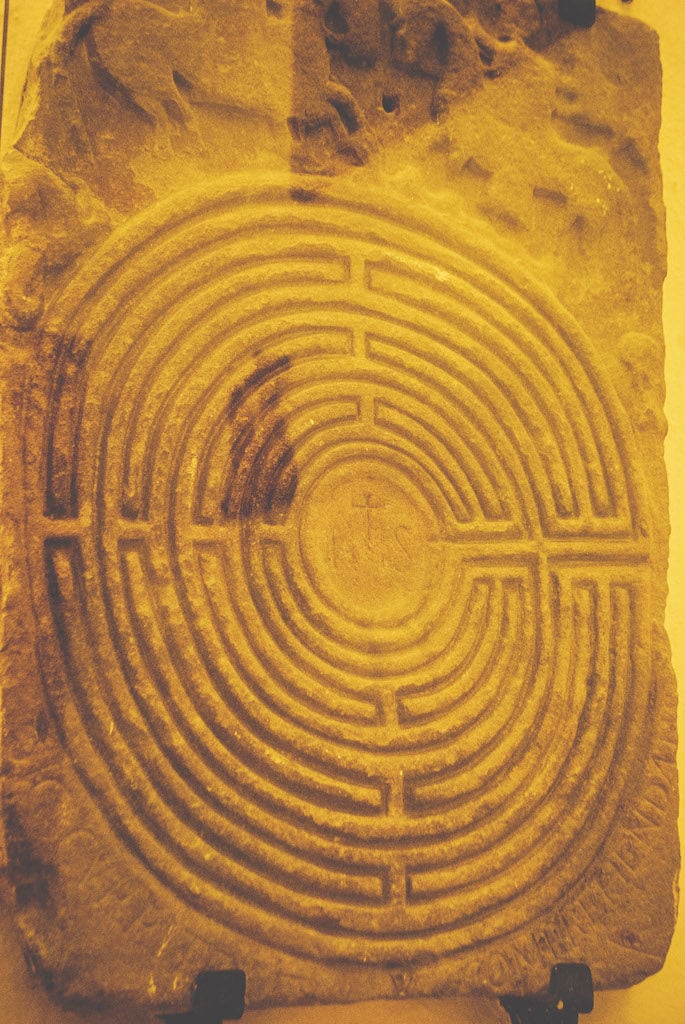
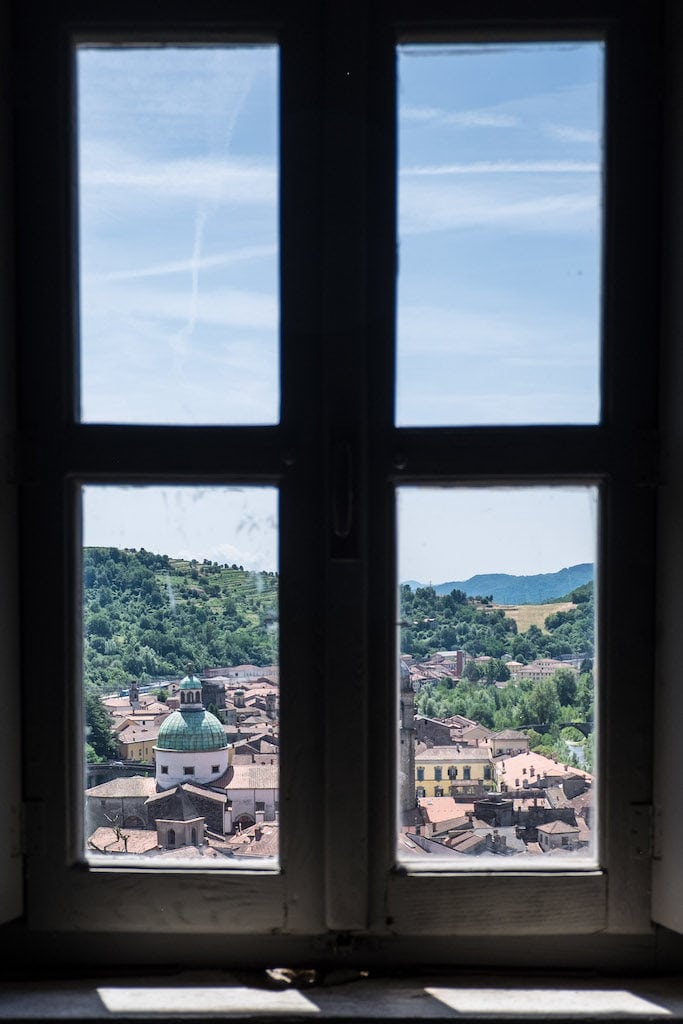
Insider tips about Pontremoli.
Pontremoli is also a little paradise for foodies. Here are a few tips you will not find in any guide.
- Visit the Antica Pasticceria degli Svizzeri, a pastry shop founded in 1842 by a Swiss family. They conquered the heart of the locals with their pastries, cakes, and spirits. The interiors of the shop are wonderful, all decorated in Art Nouveau style. They still make titbits following recipes taken from old books. Taste the Spongata, a cake made of puff pastry, a mixture of honey, cocoa, spices, mixed nuts, dried fruit, and candied fruit.
- Move to the cafè next door. Order an Espresso and one Amor, our favorite cake. Or maybe two, because they are small and so delicious. They consist of two wafers filled with mouthwatering Chantilly cream. Once in your mouth, it seems like you are making love! Indeed the word Amor means exactly love.
- Another must for locals is the aperitif at Bar Luciano in the Piazza del Duomo. Roberto is the owner of this old-fashioned bar. He is a bit grouchy, but just for the show, so do not be afraid of him. Let him serve you a glass of Bianco Oro, a patented cocktail with a secret recipe that he will never reveal. Enjoy also reading all the billboards warning incautious customers asking for normal requests! But as I said, it’s only humorous sarcasm.
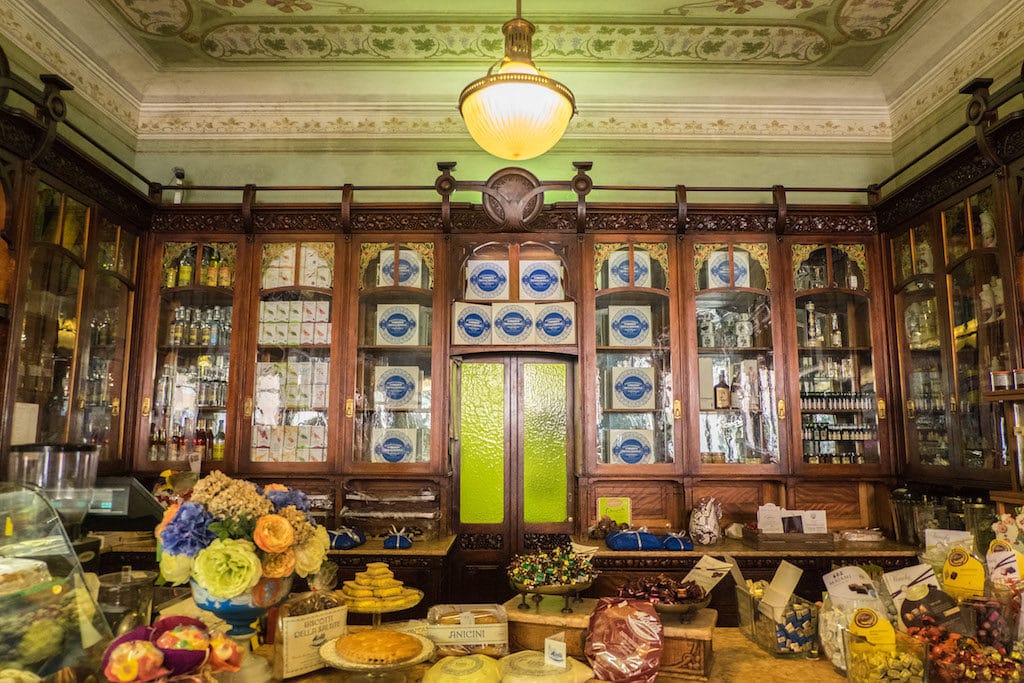
Traditional food and recipes
Keep talking about food do not miss to try other specialties from Lunigiana:
- Sgabei is a delicious fried dough to taste with ham and cheese.
- Testaroli with pesto sauce. Here is our Testaroli recipe.
- The salty herb pies.
- Buy a can of local DOP Honey.
- Look for Chestnut flour to prepare nice recipes at home. Chestnut flour is really good to bake your homemade bread. It is also the main ingredient to realize two cakes of the Tuscan tradition like the Castagnaccio, which is not typical of Pontremoli but still so delicious, and Necci with ricotta cheese.
The Tour Day
Every October and February, in Pontremoli there is an event called Tour Day. It will give you the opportunity to explore the town and taste the traditional food at the same time. Trust me, this is one of the funniest and craziest food tours in Italy. For more info, here is the official website of the event (in Italian only).
The nights of the bonfires
Finally, if you happen to be in Lunigiana in January you may be lucky to attend the nights of the bonfires. These deeply-felt games take place in Pontremoli for the nights of the two patron saints, on the 17th and 31st of January. The Contrada of San Nicolò and of San Geminiamo face each other to build the biggest and long-lasting bonfire.
What do you think about a visit to Pontremoli in Tuscany? If you need any additional information feel free to leave a comment below or send an email.
Further Readings
- Lunigiana, the valley of the moon
- Fosdinovo, the old gate of Lunigiana
- Malaspina Castle of Fosdinovo
- A little guide of Garfagnana
- Via Francigena, the pilgrim route
- The Map and Itinerary of Via Francigena in Tuscany
Pin it for later!
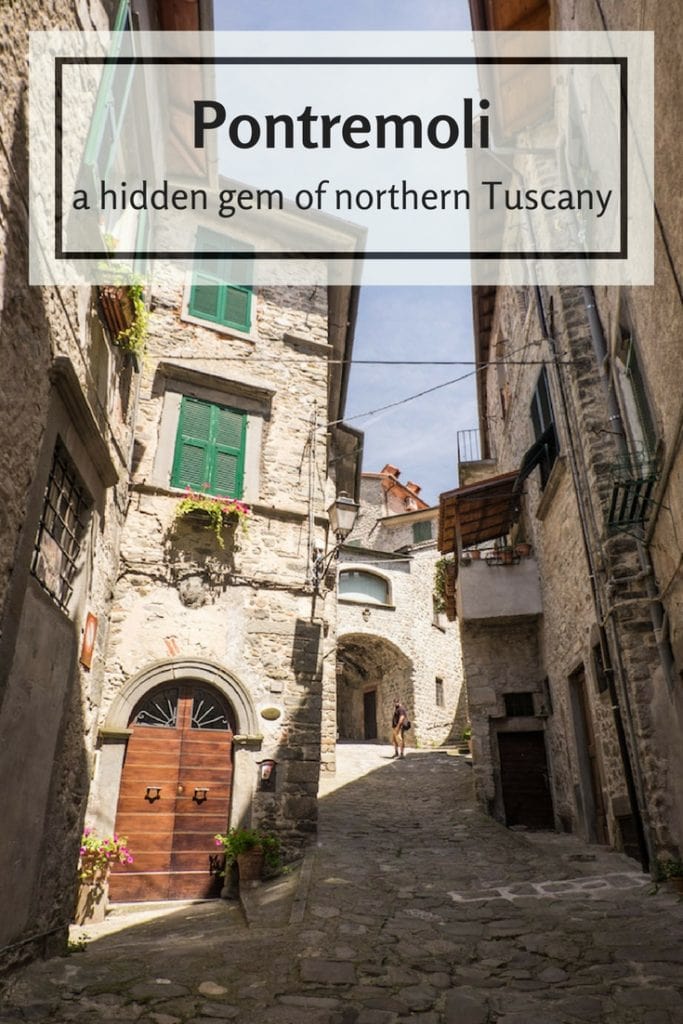
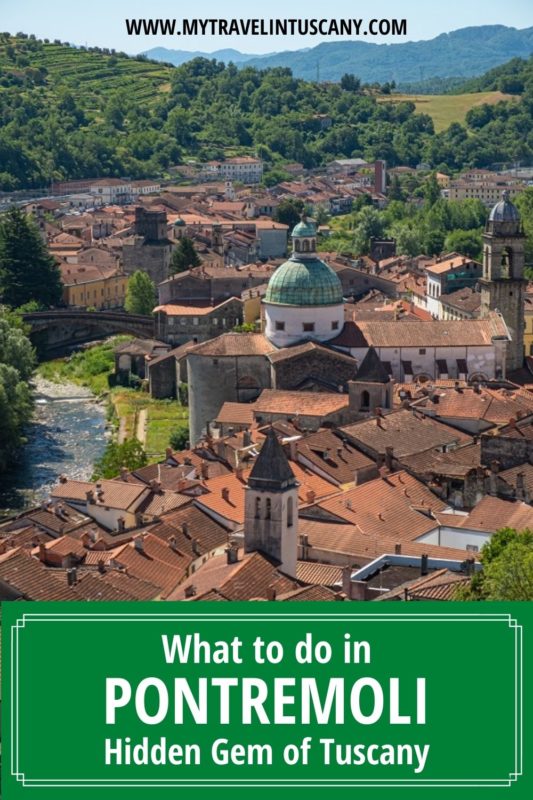

This place looks amazing! I have a thing for historic cities…and the colorful art by local artists is really cool!
Dear Brittany, I agree, Pontremoli has a lot of history, and it is perfect if you have a keen for art.
I learnt about a new place in Tuscany today, thanks to your post. If I decided to travel all over Italy and explore every little town and village, would one lifetime be enough?
Dear Punita, to be able to visit Tuscany and Italy in general, you will need more than a life, except if you are like Christoper Lambert in the movie “The Highlander” 🙂
You perfectly catched the essence of the place in your pictures, straight to my bucket list!!
I am happy you liked Rafael 🙂 Hope to see you soon in Pontremoli!
It looks like a small little village. Love those green doors and those vaulted roofs.
You are right Anuradha, small little village permits you to be in touch with the quintessential of the Italian life style.
I love all those small old streets! Your post made me miss Italy a whole lot!
I love Pontremoli and have family and a house there. It is a great place but it is certainly not a ‘village’. In English a village is typically a small place with one parish and a local parish council. Pontremoli has several parishes, a cathedral, a castle and a central council with representatives of the frazioni. It should in English be called at least a ‘country town’ and more correctly a small city (because of the cathedral and independant history).
Dear Keith, many thanks for your comment and your clarification. You are right, but sometimes, it is not easy to use the right appellative translating from Italian to English. However I agree with you and I made the change you suggest.
I’ve visited Pontremoli many times and never get bored. It’s a beautiful small city that just keeps giving. The fact that it’s so well connected is a huge bonus. If you’ve never been, what have you been doing?
Stefano
Dear Stephen, thanks for the comment. I totally agree with you. And once in Pontremoli, order a little Amor, the delicious waffles made at the Caffè degli Svizzeri.
My Family has a house in Pontremoli. I was fortunate to be able to live there for a substantial amount of time in 2017. I made friends with numerous locals and I love the area. The locals make me feel at home. I am returning next month for a visit and I am very excited.
I am relocating to Pontremoli in March 24. My brother and I have purchased a property near the Piazza. I am a food photographer and can’t wait to sample the wonderful local cuisine, walk the narrow streets and explore the surrounding landscape. Thanks for the article. A great read
Dear Paul, so happy to hear that. You have food to shoot in Italy. 🙂 When you come to Pontremoli, drop me a line. could be nice to meet.